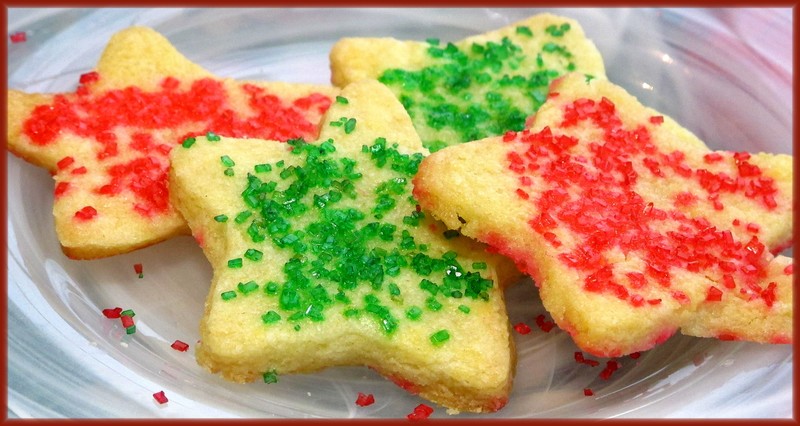This is the time of year when friends and neighbors organize holiday cookie exchanges. The purpose of the party is to share batches of cookies, so each participant arrives with one type of treat and goes home with a wide variety to last the entire season. If you’ve ever been invited to one, you’ll know how daunting the event can seem.
Hostesses will make sure everyone brings something different, and the unwritten rules insist everything must be homemade (never store-bought). They’ll also try to keep the group of attendees to a reasonable size, since you need to bring one dozen cookies for each guest. Sometimes, an exchange will call for a half dozen cookies per person, but that still means baking four dozen cookies, if the party is for eight people.
When you start planning your baking, consider the time and energy required. Bar cookies are the easiest types to make in large quantities. Dough is spread in a shallow pan (similar to brownies) and cut into squares after baking. Drop cookies are next on the easy-to-bake list, as rounded spoonfuls of dough are simply dropped onto the baking sheet. In fact, many drop cookie recipes can be converted to bar cookies in the baking step, especially chocolate chip cookies.
Molded cookies require a little more handling to form shapes like crescents, candy canes or balls. These will puff up a bit when they bake, so be careful not to super-size them. I’ve included a recipe for peanut butter cookies that begins with balls that are flattened with a fork to create a grid pattern on the top. With only three ingredients, these cookies are a perennial favorite for both bakers and dunkers.
Pressed cookies (also known as spritz cookies from the German word spritzen meaning to squirt) are made by pressing the dough through a cookie press. Cookie press kits are usually sold with several disks of differently shaped cutouts that fit into the end of the tube; you can find anything from trees to stars to wreaths.
As in the recipe below, these are rich and buttery, flavored with almond extract. The key to success is the consistency of your dough: too soft and the shapes melt into a blob when they bake; too hard and the cookies are dry. The proper cookie press technique to pop out perfect shapes is to keep the cylindrical press vertical, not at an angle, where it meets the cookie sheet.
Another type of cookie that requires an extra step is the refrigerator or icebox cookie. These are aptly named for the process of making them: dough is shaped into long logs, wrapped in waxed paper or plastic and chilled in the refrigerator. Once the dough is cold and hard, it’s sliced into rounds and baked with or without decorations. Also a good make-ahead choice, the logs of dough can also be frozen for future baking.
The most labor-intensive cookies are rolled cookies. Dense dough is rolled out like a pie crust (without a rolling pin, I had to repurpose a tightly sealed vinegar bottle). Once flattened to a consistent thinness, the dough is cut into shapes with a sharp knife or cookie cutters. The sand tarts in the photo are a Pennsylvania Dutch tradition; I always assumed they were named for the consistency of the dough, which is like packed beach sand at the water’s edge.
If you use colored sugar as a topping, don’t sprinkle on too much, or the crystals will melt together into something resembling lumpy icing. These star shapes were made with a cookie cutter; to form diamonds, slice two sets of parallel lines in the dough, first vertically, then horizontally, making sure to keep the lines evenly spaced.
Now that you’ve finished baking (whether for a cookie exchange or for family sharing) it’s time to pour a glass of cold milk and taste test your goodies.
Peanut Butter Cookies
1 C peanut butter (creamy or crunchy)
2/3 C sugar
1 egg
Preheat oven to 350 F. Line cookie sheet with parchment paper; set aside. Cream together the peanut butter and sugar. Lightly beat the egg; mix it into the peanut butter and sugar until combined. Use a melon baller or small ice cream scoop to place dough on cookie sheet about 1 inch apart. Lightly flatten each cookie with the tines of a fork to create a grid pattern. Bake for 12 minutes. Cool slightly before removing to a rack to finish cooling. Store in an airtight container. Yield: About 1 1/2 dozen cookies.
Spritz Cookies
1 C softened butter
1/2 C sugar
2 egg yolks
1 t vanilla
1/2 t almond extract
2 C flour
candied cherries, for garnish
Preheat oven to 350 F. Place cookie sheets in refrigerator while mixing dough. In a large mixing bowl, cream butter and sugar together until light and fluffy. Add egg yolks, vanilla and almond extract; mix well. Gradually add flour, beating well after each addition until thoroughly combined. Place desired disk in the cookie press and fill cookie press with dough. Extrude cookies onto chilled cookie sheet about 2 inches apart; decorate with candied cherries, if desired. Bake just until edges start to turn golden; about 10 to 12 minutes. Allow to cool on cookie sheet for a few minutes before removing to a cooling rack. Store in an airtight container. Yield: 3 dozen cookies.
Sand Tarts
1 C sugar
1/2 C butter
2 C flour
1 egg
1 egg white
1 t water
colored sugar (optional)
Preheat oven to 350 F. Line cookie sheets with parchment paper; set aside. In a large mixing bowl, beat butter and sugar together until light and fluffy. Add egg and continue beating until incorporated. Add flour and beat mixture until dough holds together; the consistency will be like wet sand. Using your hands, form the dough into a ball and place on a flat surface. Roll out to 1/4-inch thickness and cut into shapes with a cookie cutter. Place cookies on prepared baking sheet about 1 inch apart. Whisk together egg white and water. Lightly brush the top of each cookie with the egg wash and sprinkle with colored sugar (if desired). Bake for 10 minutes and remove to a rack to cool. Store in an airtight container. Yield: 3 1/2 dozen cookies.










































